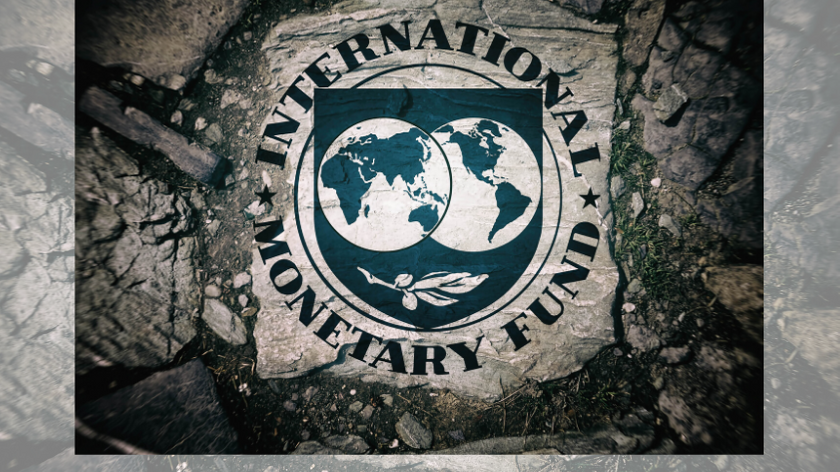Editor’s note: CPA is pushing the use of capital flow management tools to curb excessive foreign capital inflows that drive up the price of the dollar. The Baldwin-Hawley Competitive Dollar for Jobs and Prosperity Act would require the Fed to use a market access charge to slow foreign inflows, realign the dollar exchange rate and ultimately balance trade. While the US Treasury opposes capital flow management, the IMF, as the article below shows, is starting to change in favor those policies.
We need to understand better how various policy options interact
[Kristalina Georgieva| February 18, 2020 |FT]
How can we make capital flows safer for emerging market economies? Finding the right response to that question is critical for financial stability, growth and jobs. The good news is that countries are benefiting from an abundance of overseas capital, which can be used to fund fresh ideas and vital infrastructure. But they are also facing episodes of high capital flow volatility, which can hurt financial stability and the prospects of businesses and households.
Addressing volatile capital flows can be a daunting task, because there is little consensus on the right combination and timing of policy measures. Consider the 2018 episode of capital outflows from emerging markets: Brazil and Malaysia intervened in foreign exchange markets to shore up their currencies. Colombia and South Africa barely intervened. Some central banks raised interest rates, while others did not. Heavy intervention often mitigated depreciation, but not always.
All this raises questions, including for the IMF. We are therefore rethinking and updating our advice to member countries. Our goal is to provide country-specific advice on the appropriate mix of policies needed to preserve growth and financial stability.
Our new “integrated policy framework” will reassess the costs and benefits of four tools — monetary policy, macroprudential policy, exchange rate interventions and capital flow measures — to help stabilise economies exposed to domestic and external shocks. Importantly, the “integrated” aspect of the new framework will capture how these tools interact with each other and with country circumstances.
The IMF’s current framework, grounded in more conventional economic thinking, broadly steers members towards using the exchange rate as a shock absorber. This approach provides a good approximation of how advanced economies adjust to external shocks and exchange rate movements. But it can miss important characteristics of emerging markets that alter their economies’ response to external shocks and may call for a different policy prescription.
New research indicates that while emerging markets are deeply integrated in global trade, their trade is disproportionately invoiced in dollars and consequently flexible exchange rates provide limited insulation. Similarly, while emerging markets are substantially integrated in global capital markets, their foreign debt is denominated extensively in dollars. That can cause exchange rates to become shock amplifiers as they can suddenly increase debt service costs and liabilities.
In fact, the striking diversity of policies pursued among economies could reflect their differing exposure to external shocks. Emerging markets also differ widely in the liquidity of their foreign exchange markets, which could affect the range of tools available to them for stabilisation.
While the IMF’s past policy guidance to member countries has considered all of the four policy tools of the integrated policy framework, we recognise that a deeper understanding of how these policies work both in isolation and in co-ordination with each other is needed. For instance, if a country has used macroprudential measures to avoid the build-up of debt and currency mismatches prior to a shock, should it use monetary policy more, or less, to stabilise economic activity after a shock?
Should foreign exchange intervention be used to stabilise the exchange rate and contain balance sheet risks for certain kinds of external financial shocks — thus giving monetary policy greater autonomy to focus on stabilising domestic activity? How would the desirability and effectiveness of such a policy mix change depending on a country’s characteristics?
As we strive to answer these questions, the IMF’s policy guidance must be clear that there are circumstances in which some instruments have no role in the optimal policy response. And, even after we have identified the best policy mix, our advice to countries must take into account that some policies can lead to undesirable side effects. Among them: investor expectations of one-sided foreign exchange intervention can inhibit the long-term development of foreign exchange markets and lead to excessive foreign-currency debt. Finally, our new guidance should account for the significant communication challenges and credibility issues that may arise when central banks use multiple instruments.
In advancing our thinking, in close consultation with our executive board and country authorities, we are mindful that an improved framework should be sufficiently flexible to address a diverse range of objectives. Moreover, while our current focus is on policy tools that can be rapidly deployed to handle external shocks, we will eventually expand the framework to include fiscal policy.
As always, we at the IMF are striving to provide our member countries with the best available policy guidance to pursue their growth and stability objectives.
Read the original article here.













